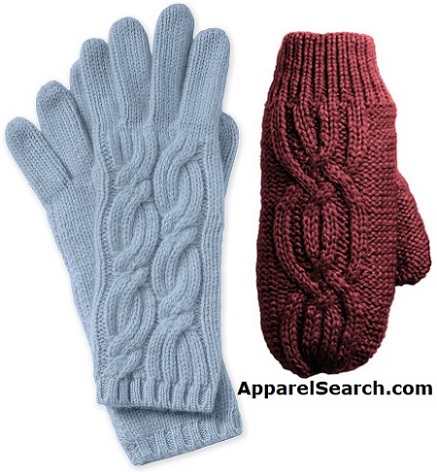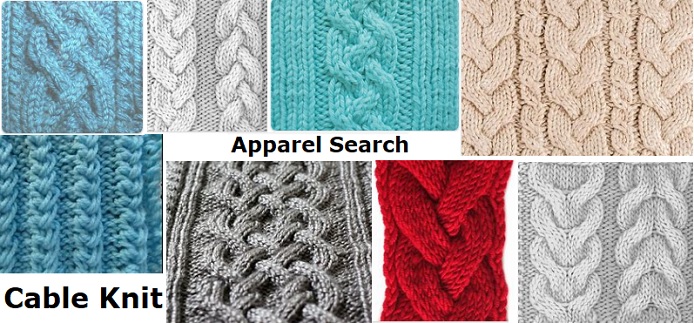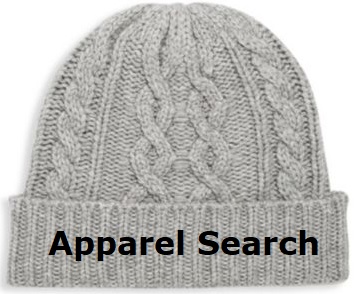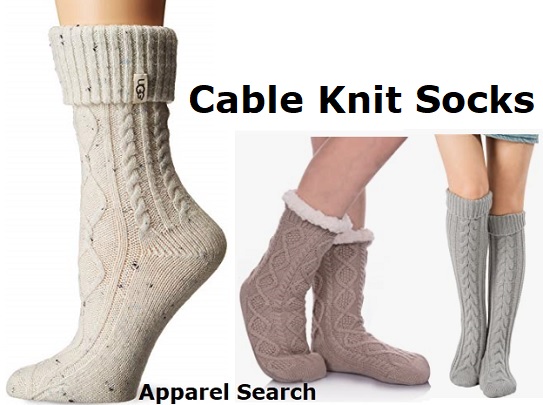Cable knitting is a style of knitting in which textures of crossing layers are achieved by permuting stitches.
- Knitting is a method by which yarn is manipulated to create a textile or fabric; it is used in many types of garments. Knitting may be done by hand or by machine.
A cable pattern is like a set of serpentine or wave-like cables, each one meandering around its own center line. A vast variety of cable patterns can be invented by changing the number of cables, the separations of their center lines, the amplitudes of their waves (i.e., how far they wander from their center line), the shape of the waves (e.g., sinusoidal versus triangular), and the relative position of the crests and troughs of each wave (e.g., one wave crests as another is crossing its center line).
Cable knitting often creates a rope like pattern. however, that is not a necessity. Many patterns made with cables do not have a rope-like quality. For example, a deep honeycomb pattern can be made by adjacent serpentines, first touching the neighbor on the left then the neighbor on the right. Other common patterns include a "Y"-like shape (and its inverse) and a horseshoe crab pattern.
Many consider cable knitting to reach its heights in the Aran sweater, which consists of panels of different cable patterns.
- The Aran sweater takes its name from the Aran Islands off the west coast of Ireland. A traditional Aran sweater usually is off-white in color, with cable patterns on the body and sleeves. Originally the Aran sweaters were knitted using un-scoured wool that retained its natural oils (lanolin) which made the garments water-resistant and meant they remained wearable even when wet.
- The Aran Sweater has many attributes which made it suitable clothing for the island's community of fishermen and farmers. It is water repellent, not allowing the rain to penetrate the sweater thus keeping the wearer dry. An Aran sweater can absorb 30% of its weight in water before feeling wet.
- The Aran sweater has been intimately linked to clans and their identities. The many combinations of stitches seen on the garment are not incidental. Aran sweaters were, and remain, a reflection of the lives of the knitters, and their families.
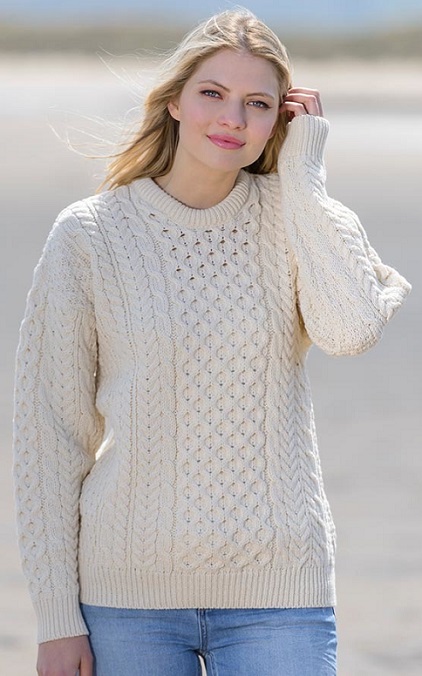
The above pictured Aran sweater is sold by the Aran Sweater Market. You can shop for authentic Aran sweaters and Irish knitwear at the Aran Sweater Market.
- Their Merino Aran Sweater, pictured above is in Natural White, combines the classic Aran look with all the comfort and softness that Merino Wool is famous for. This classic yet fashionable style features some of the most well-known Aran stitches such as the Honeycomb and Cable stitch, which were thought to bring protection and luck to the wearer.
- The Aran Sweater Market has grown from being a cornerstone of the small Island community of Inis Mor, to one of the country’s leading suppliers of Authentic Aran Knitwear. With markets now in Dublin city centre, Killarney & Galway city as well as the Aran Islands, they work with only the best of Irish suppliers and designers, to bring the beauty of real authentic Aran knitwear to a global audience.
Cable knitting usually produces a fabric that is less flexible and more dense than typical knitting.
Cables are often used to make braid patterns. Usually, the cables themselves are with a knit stitch while the background is done in purl. As the number of cables increases, the number of crossing patterns increases, as described by the braid group. Various visual effects are also possible by shifting the center lines of the undulating cables, or by changing the space between the cables, making them denser or more open.
Cables are usually done in stocking stitch and surrounded with reverse stocking; this causes the cables to stand out against a receding background. But any combination will do; for example, a background seed stitch in the regions bounded by cables often looks striking.
- Another visually intriguing effect is meta-cabling, where the cable itself is made up of cables, such as a three-cable plait made of strands that are themselves 2-cable plaits. In such cases, the "inner" cables sometimes go their separate ways, forming beautiful, complex patterns such as the branches of a tree. Another interesting effect is to have one cable "pierce" another cable, rather than having it pass over or under the other.
A one-cable serpentine is simply a cable that moves sinusoidally left and right as it progresses. Higher-order braids are often made with such serpentines crossing over and under each other.
A two-cable braid can look like a rope, if the cables always cross in the same way (e.g., left over right). Alternatively, it can look like two serpentines, one on top of the other.
A three-cable braid is usually a simple plait (as often seen styled in long hair), but can also be made to look like the links in a chain, or as three independent serpentines.
A four-cable braid allows for several crossing patterns.
The five-cable braid is sometimes called the Celtic princess braid, and is visually interesting because one side is cresting while the other side is in a trough. Thus, it has a shimmering quality, similar to a kris dagger.
-
The kris dagger is an asymmetrical dagger with distinctive blade-patterning achieved through alternating laminations of iron and nickelous iron (pamor). The kris is famous for its distinctive wavy blade
The six-cable braid is also called a Saxon braid, and looks square and solid. This is a large motif, often used as a centerpiece of an Aran sweater or along the neckline and hemlines.
The seven-cable braid is rarely used, possibly because it is very wide.
Note: Two cables should cross each other completely in a single row because making an intermediate crossing row of fewer stitches look good is very difficult. For example, where a pair of three-stitch-wide cables cross, all three stitches of one should cross over the three of the other cable.
In addition to cable knit being important to the sweater market, this type of knitting is also often used for knit hats, gloves, scarves and mittens. Cable knit hats & gloves are almost always in style.
Cable knit socks are also a popular type of knit garment.
Cable knit gloves & mittens are a great choice for embracing the cold weather with style.
